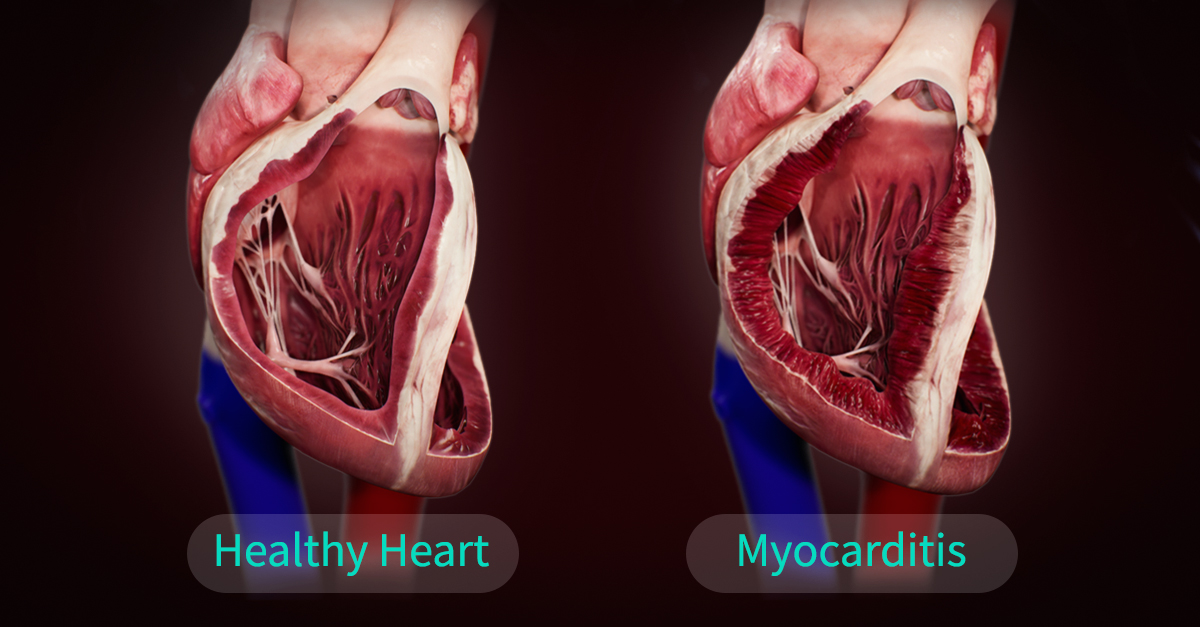
Simply put, myocarditis is inflammation of the heart muscle. Although it is a rare condition, it can develop from a viral infection, a drug reaction, or as a general inflammatory condition. This is a serious condition as the inflammation can reduce the ability of the heart to pump blood and in severe cases the heart weakens enough so that the rest of the body does not receive sufficient blood. Additionally, clots can form in the heart, resulting in a stroke or heart attack.
People with early myocarditis may have no symptoms, however some may experience mild symptoms such as chest pain, fatigue, swelling of the lower extremities, arrythmias, shortness of breath, or flu-like symptoms. Common tests that can detect this condition are an electrocardiogram, chest x-ray, and echocardiogram. Less frequently MRI scans and heart biopsies can also detect myocarditis.
There is currently no known cure for myocarditis, therefore physicians will treat the symptoms caused by the condition. For instance, if blood pressure is elevated, the elevated blood pressure will be treated. It is important to avoid strenuous exercise while diagnosed with myocarditis. Excessive strain on the heart can delay healing. Smoking, alcohol consumption, and caffeinated products are also not advised. For a significantly small portion of individuals with autoimmune conditions, myocarditis may develop into giant cell myocarditis. This is an even rarer disease that often results in rapid deterioration but can still respond to treatment if caught early.
Many people can go on to live long and full lives after the treatment of myocarditis. However, some do have ongoing cardiovascular medication or even heart transplants may be needed. Although it is classified as a rare disease, myocarditis affects millions of adults and children around the world each year. The search for a cure continues as patients and healthcare providers gather more information each day.
Although it is classified as a rare disease, myocarditis affects millions of adults and children around the world each year. The search for a cure continues as patients and healthcare providers gather more information each day. Use Complete Anatomy to further understand the functions of the heart.
